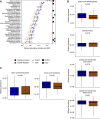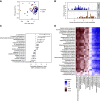Perturbations of the Gut Microbiome and Metabolome in Children with Calcium Oxalate Kidney Stone Disease
- PMID: 32381601
- PMCID: PMC7269359
- DOI: 10.1681/ASN.2019101131
Perturbations of the Gut Microbiome and Metabolome in Children with Calcium Oxalate Kidney Stone Disease
Abstract
Background: The relationship between the composition and function of gut microbial communities and early-onset calcium oxalate kidney stone disease is unknown.
Methods: We conducted a case-control study of 88 individuals aged 4-18 years, which included 44 individuals with kidney stones containing ≥50% calcium oxalate and 44 controls matched for age, sex, and race. Shotgun metagenomic sequencing and untargeted metabolomics were performed on stool samples.
Results: Participants who were kidney stone formers had a significantly less diverse gut microbiome compared with controls. Among bacterial taxa with a prevalence >0.1%, 31 taxa were less abundant among individuals with nephrolithiasis. These included seven taxa that produce butyrate and three taxa that degrade oxalate. The lower abundance of these bacteria was reflected in decreased abundance of the gene encoding butyryl-coA dehydrogenase (P=0.02). The relative abundance of these bacteria was correlated with the levels of 18 fecal metabolites, and levels of these metabolites differed in individuals with kidney stones compared with controls. The oxalate-degrading bacterial taxa identified as decreased in those who were kidney stone formers were components of a larger abundance correlation network that included Eggerthella lenta and several Lactobacillus species. The microbial (α) diversity was associated with age of stone onset, first decreasing and then increasing with age. For the individuals who were stone formers, we found the lowest α diversity among individuals who first formed stones at age 9-14 years, whereas controls displayed no age-related differences in diversity.
Conclusions: Loss of gut bacteria, particularly loss of those that produce butyrate and degrade oxalate, associates with perturbations of the metabolome that may be upstream determinants of early-onset calcium oxalate kidney stone disease.
Keywords: intestine; kidney stones; metabolism; pediatric nephrology.
Copyright © 2020 by the American Society of Nephrology.
Figures




References
Publication types
MeSH terms
Substances
Supplementary concepts
Grants and funding
LinkOut - more resources
Full Text Sources
Medical

